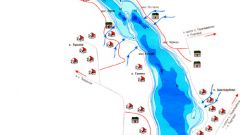The spleen is in the abdomen in the left hypochondrium. It is enclosed in a dense capsule. A large part of the spleen consists of red and white pulp. The white pulp consists of lymphoid tissue in which lymphocytes are produced. The red pulp is filled with formed elements of the blood, mainly red blood cells. In addition hematopoietic function, it removes from the blood damaged red blood cells, unwanted organisms, and also produces antibodies. Synthesizing antibodies, it takes part in protective reactions of the organism against infectious agents. The spleen not only destroys, but accumulates red blood cells, white blood cells, platelets. It is up to fifty percent of platelets that are released into the blood. In the spleen has no pain receptors, it can't hurt. The pain comes from stretching of its capsule, because of the rapid increase.The causes of pain can be both external factors and diseases of the spleen and other organs. The external factors include open and closed injuries of the body. Open lesions appear after a penetrating stab, incised, and gunshot wounds of the abdomen or left side of the chest with simultaneous wound of the diaphragm. Closed injuries often occur due to a fall on the abdomen, hit in the left hypochondrium. Thus possible cracks and wounds of the spleen of different length and depth, the distance of the whole spleen or of its parts that can cause bleeding into the abdominal cavity.Pain in the spleen can occur when different diseases. For example, during a heart attack. It can appear because of a number of infections in atherosclerosis, lymphosarcoma, etc. the Clinical picture of infarction of the spleen depends upon its size. Asymptomatic occur in small infarcts, and infarct, as a result of development of inflammation of the capsule of the spleen, pain in the left hypochondrium, aggravated by inspiration.Abscess of the spleen may develop with bacteremia on the background of endocarditis or of salmonellosis during infection of the infarcts of the spleen, subcapsular hematomas. When absence appears fever, pain in the upper left abdomen and chest. Tuberculosis of the spleen is more often a manifestation of miliary tuberculosis. Tuberculosis of the spleen is rare and occurs with weak symptoms. Tumors, both benign and malignant, are rare. From benign in the spleen are hemangioma, and fibroma limpisima. Among malignant tumors is more common lymphoma. In the process of growth of tumor sites and increase the body, patients feel heaviness and dull pain in the left hypochondrium.
Why hurt the spleen
The spleen plays an important role in the human body, though not considered a vital organ. It takes part in metabolism and is a kind of filter of the body. When a person has pain in the spleen, this means that the body has ceased to perform its functions. It threatens the weakening of the immune system.

Is the advice useful?















